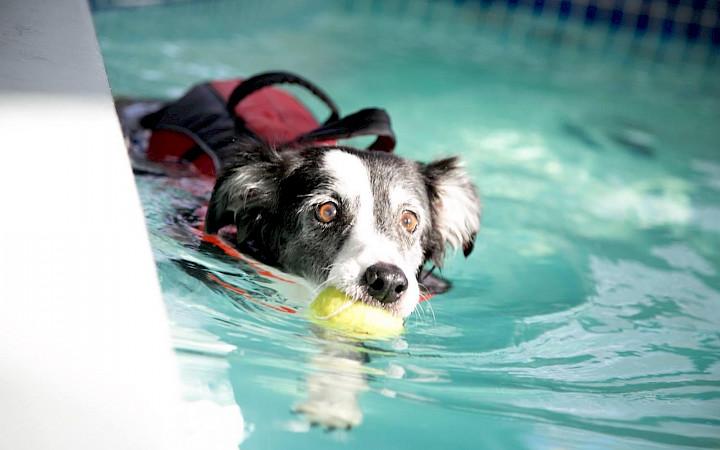
Dogs, just like people, lose endurance, muscle mass, and develop arthritis in their joints. The difference is that they won’t be able to tell you directly. So, you need to look for the signs that activities they used to enjoy, like retrieving, are becoming less enjoyable. Sometimes it can be as subtle as a dog not wanting to go upstairs to bed any longer, or deciding not to chase that squirrel. It is all a normal part of aging, and there are things that you can do to keep your dog fit even in their old age.
If you are concerned about your dog’s orthopedic condition, definitely see your vet. Sometimes it is just arthritis from years of wear and tear. But sometimes, a dog with a disk problem will manifest that by limping on only one leg. Some disk problems don’t need to be treated aggressively, but some do. So first thing is to know what exactly you are dealing with.
- In general, running or walking on pavement is harder than walking on grass or a dirt path. The percussion of hard surface, particularly on bad elbows, can really interfere with your dog’s enjoyment of a walk. Find a soft surface when you can.
- Frequent short walks are generally better than a couple of long ones. If you’re my age, you may feel really stiff when you first get up after sitting for a long time! And then you feel better once you are up and moving. The same holds true for your dog. It is far better to take 3 twenty minute walks with an arthritic dog than a one hour walk.
- If your dog likes to swim, try to find a safe body of water or a dog pool. There is no better exercise for an old dog because there is no impact on the joints when you swim. It also helps even out muscle mass if a dog favors one leg on land.
- Don’t encourage your dog to jump into or out of the car, or jump up to catch a ball. This is probably true for dogs of any age, but it is really important for older dogs. It is an easy way to tear a knee ligament or injure elbows and hips, and once your dog is injured, she will be putting excess weight on the other joints that are probably already stressed from age. Paws up on the car seat and assist from you, or picking your dog up, is the best way to get in the car when your dog is older.
- Walking up hills or over small obstacles like tree roots can keep you dog’s back end more fit and your dog more aware of all their body parts. So a walk in the woods is good for both body and soul!
Remember, your dog is not likely to complain about a long walk or refuse to retrieve a ball even if it hurts. So keep your antennae up and modify your dog’s exercise at the first sign of a problem. It will add to the enjoyment that you share together.